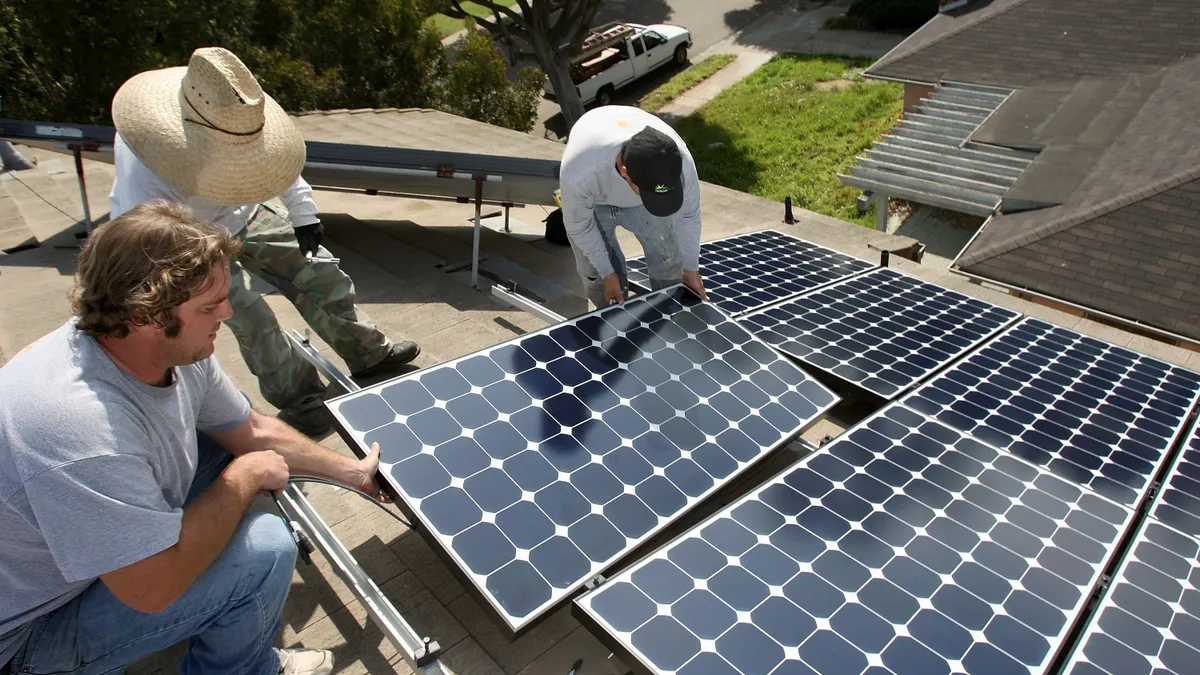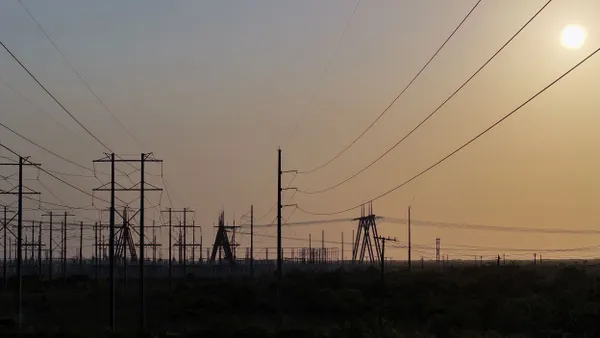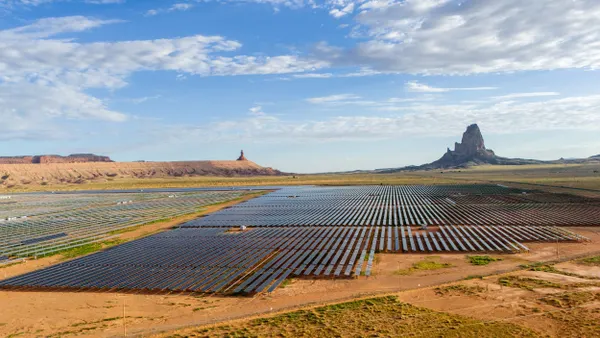Uncompromising final arguments were filed Sept. 14 in the nationally-watched debate to set a behind-the-meter (BTM) solar tariff in California to succeed the state's retail rate net energy metering (NEM).
Proposals to cut NEM export compensation to customers will "kill" their right of self-generation and are "hostile" to solar businesses, solar advocates said. But current compensation for solar owners creates a "massive" shift of system costs to non-solar owners and a "crisis" of rising electricity rates, customer advocates and U.C. Berkeley economists noted.
NEM changes proposed by a coalition of stakeholders that "want us dead" may alter the "payback period" on solar purchases and "devastate today's market," California Solar and Storage Association (CalSSA) Policy Director Brad Heavner said.
That coalition, which includes environmental advocate the Natural Resources Defense Council (NRDC) and ratepayer advocate The Utility Reform Network (TURN), sees a threat of higher costs to all electricity consumers.
"The solar industry is attacking groups that support reform," but today's NEM "is a material driver of rate increases," TURN Staff Attorney Matthew Freedman said. Without reform that recognizes "the needs of the many outweigh the needs of the few," the cost shift "will explode in the coming decade and threaten affordability for all customers."
The "fundamental tension" in California's NEM legislation is that compensation must both drive solar growth and protect all customers, a CPUC-ordered study on cost shifts concluded. Standard regulatory metrics show retail rate NEM shifts costs unjustly. But a new approach to solar that recognizes its reliability value may remedy that, some stakeholders suggested.
A national question
Utilities and solar advocates across the country face the same "fundamental tension" and are debating the potential shift of costs from solar owners to electricity customers who do not own solar.
NEM is available in 39 states and D.C., according to an August 2021 summary by the North Carolina Clean Energy Technology Center (NCCETC). More than half have considered legislative or regulatory revisions to current NEM policies, and nine, including Illinois, New York and Hawaii, have moved to the significantly different "net billing," a May 25 NCCETC blog post reported.
Net billing offsets generation used onsite at the retail rate, but credits generation sent to the utility at a lower price, sometimes the utility's avoided cost, NCCETC Senior Policy Program Director Autumn Proudlove said. It often is implemented with a change from monthly netting of the difference between a solar owner's production and consumption to one-hour or instantaneous netting, she added.
Monthly netting intervals can offset more energy consumption, like nightime electricity usage from daytime solar production, she said. Shorter netting periods benefit customers less and are more complex, but the granularity more precisely matches utility costs.
Several states, including California and South Carolina, have also added solar customer minimum bills or grid access charges to cover system costs and limit shifting those costs to customers without solar, NCCETC reported. A minimum bill is a fixed monthly minimum payment amount that can be offset by NEM credits and a grid access charge is a fixed monthly payment that cannot.
Solar advocates argue solar customer-specific charges and shorter netting periods violate regulatory principles and limit BTM solar's value proposition, Proudlove said. Monthly netting with time-of-use (TOU) periods, used in California, approved in South Carolina, and proposed in North Carolina, "could be a compromise" because they increase granularity and allow more targeted fixed charges, she said.
Now regulators and analysts are watching California's NEM 3.0 proceeding "because the state is the leading U.S. solar market," Proudlove said. Solar advocates have long argued a cost shift would only be significant at solar penetrations that affect state policy goals or grid conditions, "but California is at that penetration and if there is a cost shift, it could be meaningful there," she said.
California's cost shift
Rate design, netting, and solar-specific charges may play a role in California's final decision, but the retail rate credit's potential cost shift is the focus.
Under today's NEM, distributed solar owners are credited with the TOU retail rate for the electricity their systems send to their utilities. But it allows solar owners to pay less than utilities' costs to serve them, and those costs are shifted to customers without solar, according to the California Public Utility Utilities Commission (CPUC)-ordered January 2021 Lookback Study.
With the falling costs for central station renewables, utilities can meet renewables mandates at an estimated average of $0.03/kWh, stakeholders said. That is reflected in recent CPUC avoided cost calculator value reductions for additions to California's 11.05 GW of BTM solar.
These findings show the current retail rate NEM imposes costs on California customers without solar while solar owners are "over-subsidized," said NRDC Climate and Clean Energy Program Senior Scientist Mohit Chhabra. The current rate may meet California's Assembly Bill 327 mandate to sustain solar growth but does not meet its requirement to protect all customers, he said.
The retail rate credit has also driven BTM solar growth for disproportionately wealthy customers at the expense of lower-income customers with less access to solar, Chhabra added.
But standard CPUC regulatory metrics and cost tests used in the lookback, avoided cost, and cost shift studies and most other regulatory evaluations are inadequate to accurately draw those conclusions, Solar Energy Industries Association (SEIA) Senior Director and Counsel for California Rick Umoff and Vote Solar Senior West Region Director Susannah Churchill said.
The cost shift is overstated by almost 60% because the avoided cost calculator and the lookback study miss values and omit benefits like reduced costs for new transmission and generation that reduce system costs, according to the NEM 3.0 proceeding filing by consultant R. Thomas Beach for SEIA and Vote Solar.
Those cumulative savings, the societal benefits of reduced natural gas generation like avoided carbon emissions and reduced air pollution, and rooftop solar's local economic benefits add up to $4.3 billion, Beach reported in 2021 testiomony.
Those societal and other benefits and the need to expand renewables for lower income communities are important, NRDC's Chhabra acknowledged. But they cannot offset the difference between IOU retail rate NEM as high as $0.30/kWh and utility-scale renewables procurements at or below $0.03/kWh, he said.
The generation, distribution and transmission costs avoided by rooftop solar are set by the commission in a formal proceeding (D.20-04-010), added Southern California Edison (SCE) spokesperson Ron Gales, whose statements to Utility Dive were supported by Pacific Gas and Electric (PG&E) and San Diego Gas and Electric (SDG&E), California's other dominant investor-owned utilities (IOUs).
Addressing California's cost shift has become urgent because utility data shows average residential customers without solar now pay "an additional $115-$245 each year" because of retail rate NEM, Gales said. Without reform, utilities estimate that may be $500/year by 2030.
Costs associated with NEM are limited at 8% of utility load penetrations, according to a 2019 study from Lawrence Berkeley National Laboratory (LBNL). But at California's higher penetrations, system cost impacts that drive a cost shift would be "slightly higher" because "the avoided cost value of each solar kWh declines as the penetration increases," said LBNL Research Scientist and paper co-author Andrew Satchwell.
Finding the right compensation credit is "complex" because "solar's value to the distribution or the transmission system varies by its location," said former California utilities commissioner Mike Florio, now a Gridworks Senior Fellow and energy policy consultant.
And the proposals for how to fairly compensate that value similarly vary.
California proposals
Net billing at the avoided cost, a "grid benefits charge," and "instantaneous netting during TOU periods" will eliminate the cost shift, the Joint Utilities filing representing SCE, PG&E and SDG&E said. Low-income pricing and NEM tariffs for virtual power plants will expand solar access, it added. Only a transitional "buffer" period should precede implementation of the new tariff.
A similar net billing and grid benefits charge proposal was intially filed by a coalition that included the CPUC's Public Advocates Office (Cal Advocates), NRDC, the Coalition of California Utility Employees, the California Wind Energy Association (CalWEA), TURN and the Independent Energy Producers Association (IEPA). Though the groups filed separate final comments, their proposals remained aligned.
Incentives and an upfront rebate would drive the pairing of battery storage with solar to "maximize grid benefits while minimizing unintended rate burdens," the initial filing said. Its plan included hourly or instantaneous netting, a grid benefits charge waiver and/or an equity charge for low-income customers, and implementation "no later than January 1, 2024."
The SEIA-Vote Solar successor tariff would gradually reduce the credit to higher-income solar owners to relieve the shift of costs and impose a high peak-to-off peak TOU rate to drive storage adoption, Vote Solar's Churchill said. Lower income customers would also get "low-cost financing and higher incentives" to increase their access to solar ownership's benefits.
Like SEIA-Vote Solar, CalSSA strongly opposes the positions of the Cal Advocates coalition and the utilities.
The NEM 3.0 credit should be a stepped down retail rate in a gradual glidepath conforming to changes in solar's annual avoided cost calculator value, the health of the solar market, and adoption targets, CalSSA's initial brief said. The Cal Adovcates arguments are legally invalid, "muddle the record," and "cause for reversal," it's final brief added.
With stakeholders showing little inclination toward compromise, the CPUC will have to find the common ground, said former Department of Energy executive and Massachusetts public utility commissioner Susan Tierney, who testified in hearings.
But there may be common ground in new approaches, some stakeholders said.
Common ground?
South Carolina's 2020 successor tariff set a new standard when it won approval from both Duke Energy and solar advocates as "a middle ground approach in a state that was very contentious," NCCETC's Proudlove said. It had net billing, time varying rates, critical peak pricing, monthly netting, upfront incentives for solar owners, along with a minimum bill and other charges to prevent a cost shift.
A multi-component successor tariff similar to Duke's was approved Sept. 16 by the Sacramento Municipal Utility District (SMUD) board to address its growing rooftop solar penetration.
SMUD combined its credit reduction with time-varying rates, critical peak pricing, and upfront incentives to drive pairing of battery storage with solar installations, according to SMUD. It also added a virtual net metering program for customers in multifamily dwellings or with inadequate financial resources to increase solar access.
The rate designs, incentives, rebates and other elements used in the South Carolina and SMUD successor tariffs are part of the California NEM debate, but solar's future may be the reliability value of solar plus storage as resource adequacy, said Center for Energy Efficiency and Renewable Technologies (CEERT) Executive Director V. John White.
"There are legitimate cost shift questions, but California can create a future for rooftop solar by merging the NEM proceeding with its Resource Adequacy (RA) proceeding," White said. With today's system stresses, RA is now about 24/7 reliability, "and solar with storage can provide the demand management and load flexibility the system needs."
That will require "thinking outside the narrow confines of individual proceedings" and "making the NEM decision contingent on the RA proceeding's decision on compensation to distributed resources," he said. Continuing NEM in some form until solar-plus-storage can be compensated as RA "would be a glidepath to a new alternative that protects the future of the solar industry," he said.
Solar advocates "are working to help develop the framework for that compensation mechanism, but there are too many uncertainties for it to be a condition of net metering reform," CalSSA's Heavner said.
California's 2016 NEM 2.0 decision, on which former CPUC Commissioner Florio voted 'no,' "missed the chance to lower the credit rate in a gradual and less disruptive way to the solar market," he said. "The state cannot afford for the commission to punt again. But with an environmental group like NRDC agreeing the export compensation is too high, there is more middle ground now," he added.
AB 327 "requires balancing interests," he said. A glidepath that allows "increasing the payback period in stages over a few years" while new approaches to compensation or new insights into locational value are developed "could be a reasonable approach."
A proposed decision is expected in December. But "I will be surprised if there is not litigation of the decision," former Massachusetts utility commissioner Tierney said.













